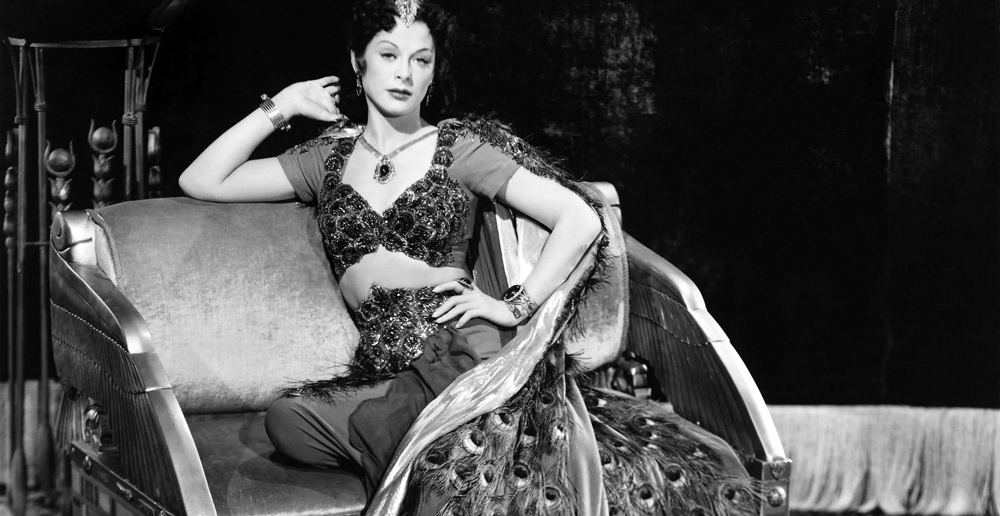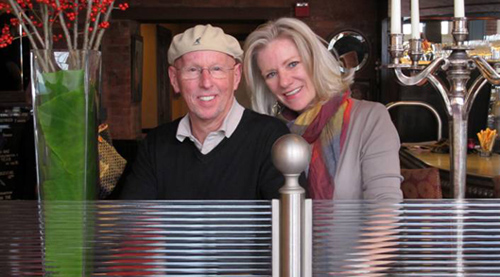Few creatures would seem to offer the antithesis to mental heft that the peacock does.
Those feathers with the shimmering blue-green eyes. That fanning, undulating tail. That strut.
That pea brain.
An exhibit on peacocks, though, that’s another story. The curators at the Hudson River Museum in Yonkers have plumbed the plumage to reveal a rare bird, a protean metaphor for our ambivalence toward beauty, the tension between male regard and female power and the narcissism of what we might call Selfie Nation.
“I feel like we’re riding the crest of a wave,” says Bartholomew F. Bland, the museum’s director of curatorial affairs, who together with Laura L. Vookles, chief curator of collections, has put together “Strut: The Peacock and Beauty in Art” (Oct. 11-Jan. 18).
Indeed, you know you’re on to something when The Metropolitan Museum of Art, which has a lot of peacock-themed stuff, wants your catalog for its gift shop. From peacock candles and paintings at Pier One to peacock rugs, wine holders, wall art and vases from Touch of Class, the peacock is having another moment, thanks to what Bland calls “the neo-Victorian return of the last decade.”
For those who can’t get enough peacock tchotchkes, the Hudson River Museum exhibit is just the ticket.
“A lot of the show is dec(orative) art,” Bland says. “Vases, fabric and posters.”
There’s a Crown Derby hand-painted porcelain “Vase, With Peacock Feather Motif” (circa 1878-90); “Peacock Fabric” (mid-20th century) on printed cotton; and a Judith Leiber “Peacock-Shaped Multicolor Rhinestone Minaudière” (2004) made of gold-plated brass, Swarovski crystals and semiprecious stones with a gold kid-skin interior. These items befit a museum whose Victorian-era Glenview mansion contains a fire screen of a stuffed peacock, which, Vookles writes in the accompanying catalog, “signaled consumption and refined taste in the 19th-century home.”
Tastes change, however, and beauty is, as they say, skin-deep.
“I keep coming back to the idea of beauty and art and how suspect beauty is,” says Bland, who remembers the peacock’s nocturnal shriek from childhood visits to his grandparents in northern Florida. “We have a feeling that (beauty) is unjust, because who gets it doesn’t necessarily reflect moral goodness.”
Then again, neither does the distribution of brains or talent. Yes, Bland adds, but brains and talent imply exertion in their cultivation. Brains and talent do. Beauty just is. And what it is can be crass.
“Just think of the peacock strutting about,” Bland says. “It can be blatant in its beauty. And it can be seductive.”
The indifference to virtue can veer into vice. We’ve all heard the expression, “Proud as a peacock.” The pride that goeth before the fall is represented in Paul Cadmus’ egg tempera painting “Pride” (1945), part of his postwar “Seven Deadly Sins” series, featuring a bloated blue hermaphrodite with peacock eyes for nipples. Four centuries earlier, Pieter Brueghel the Elder cast the peacock in the same haughty role in his engraving “The Seven Deadly Sins: Pride” (1558) – though his son Jan chose instead to portray the bird’s visual splendor in his painting “The Five Senses: Allegory of Sight.” There’s even a sly reference to pride in the exhibit’s “Nureyev” (2011), Rikki Morley Saunders’ tribute to the arrogant beauty of the dancer in the form of a crested, tiptoeing bronze peacock, whose feathers trail it like a bridal train.
Feminine analogies are inescapable here, for part of what unsettles us about the peacock and the beauty it represents is its either-or transvestism – a subject Bland develops in his catalog essay, “Peacocks, People, and the Sexual Masquerade.” On the one hand, “it” is a “he” in the most traditional sense of the word. Notwithstanding Darwin, who at first thought the bird too ornamental to survive predation, the peacock is a macho male – strutting, displaying and emitting a shrill sound that is an assault on the central nervous system, all for love of the drab peahen; and squaring off against its own kind, again for said peahen, and even snakes, which are among the creatures this omnivore eats. (This reporter once saw a peacock in full display face off against an Old English Sheepdog.)
The masculinity of the peacock is further consolidated by its symbolic voyeurism. In Greek mythology, its feathers are made of the 100 eyes of Argus, Hera’s watchful servant, killed in his vain attempt to keep the jealous goddess’ philandering hubby Zeus from the maiden Io. In Christianity, those same feathers become the wings of St. Michael the Archangel, their all-seeing eyes weeping at humanity’s failings.
The peacock, then, represents male regard and particularly male regard of the female. It’s also a reminder that in nature at least (and quite possibly in art history as well) the male of the species is the sex symbol.
Yet human nature is more complex. It wasn’t long after the peacock made its way from its native India to the West that its feminine prettiness was co-opted by the female. The peacock pulls Hera’s chariot. It adorned the spectacular Worth gown that Lady Curzon wore in 1903 to the ball after the Delhi Durbar, a festival proclaiming Edward VII and Queen Alexandra emperor and empress of India. Lady Curzon’s subsequent death reinforced the idea of the peacock as a harbinger of doom. But that didn’t stop modern-dance diva Ruth St. Denis and elegant ecdysiast Gypsy Rose Lee from taking inspiration from the peacock for their acts.
Not that the relationship between a girl and her peacock has always been an easy one. Bland points to a 1921 Life magazine cover by artist F. X. Leyendecker, in which a showgirl tussles with a peacock. It’s part glam prizefight, part mating ritual, and it is light-years away from “Peacock,” a 2010 dance hit in which Katy Perry, employing both peacock plumage and strut, asks her male listeners, “Are you brave enough to let me see your peacock?” The female has assumed not only the peacock’s prettiness but its aggressive stance. Its sexual transformation is complete.
Perry’s performance encapsulates the peacock’s flamboyance – “there’s nothing ‘less is more’ about the peacock,” Bland says. But in our own time, the bird signifies not only our “showoff culture” but the triumph of the visual over the verbal and the auditory, that how you look is more important than what you say or how you say it.
“In an age of photography,” he adds, “you do not think of the voice.”
So there we are – dumb bird.
And yet beauty remains beguiling.
“I hope people come to the show and … dig into its riches,” Bland says, “because the works are so beautiful.”
For more, visit hrm.org.






Exquisite bird, glorious exhibit. The peacock has inspired poets, composers, artists of all kinds, as well as having given joy to all who have had the privilege of seeing one or (What a marvel!) many.
Thank you to the curators of this beautiful exhibit at the Hudson River Museum.